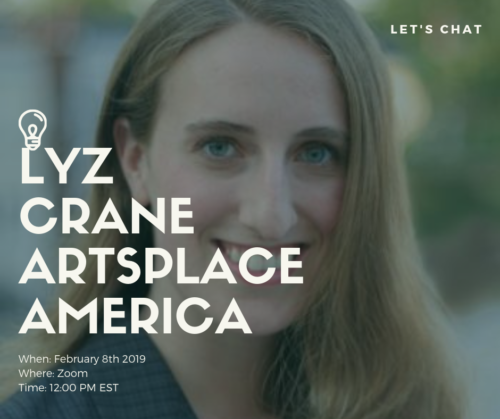
Recently I had the pleasure of reconnecting with a friend and colleague. The Community Engagement Network hosted a conversation with Lyz Crane addressing the topic of creative placemaking and community engagement. (To join the Network, click here or email us a CEN@artsengaged.com.) Lyz is Deputy Director of ArtPlace America, the private agency whose ten-year mission is to encourage and support creative placemaking. She is also a friend whose comments almost ten year ago helped convince me that my first book, Building Communities, Not Audiences was necessary and who subsequently contributed a chapter to that book.
In preparing for her presentation I was reminded of at least three principal critiques of creative placemaking. Lyz’s presentation highlighted the work ArtPlace is doing to address those issues.
First, the concerns. Especially early on many people assumed that creative placemaking was simply code for a continuation of the 20th century passion for big bricks and mortar arts projects that cleared urban (usually) neighborhoods and raised giant arts centers that were often economically unviable. The fact that major developers were early supporters of creative placemaking contributed to this assumption. A second concern was, for obvious reasons, gentrification–the displacement of current residents and businesses due to escalating rents and property values. A third concern was similar but not specifically economic. My friend Roberto Bedoya coined the term creative placekeeping to highlight the fact that creative placemaking projects were not being undertaken in a vacuum. There were people, communities, and cultural practices already in place in any inhabited area. It was not the job of “creative placemakers” to make something from scratch. There was a moral responsibility to acknowledge the assets already in existence in a place and build upon them.
In her conversation with us, Lyz spoke about how ArtPlace is not focused on construction projects and is committed to using art to enhance communities in cooperation with the current residents of those communities. What she described was strikingly like the core principles of effective community engagement. More on that in a second.
It is not surprising that ArtPlace is taking this tack. In the 2010 book Creative Placemaking, the work that in them minds of many invented the creative placemaking movement, authors Ann Markusen and Anne Gadwa said:
In creative placemaking, partners from public, private, nonprofit, and community sectors strategically shape the physical and social character of a neighborhood, town, tribe, city, or region around arts and cultural activities. Creative placemaking animates public and private spaces, rejuvenates structures and streetscapes, improves local business viability and public safety, and brings diverse people together to celebrate, inspire, and be inspired.
The movement’s core philosophy is rooted in honoring and working with communities. Not surprisingly, effective creative placemaking is very much like effective community engagement. Simply put, when working with people, observe the Golden Rule or, to be cruder, Don’t be a #@$!!. Talk with people, get to know them, don’t go in assuming you have answers for them. (You don’t.)
Lyz, thanks for sharing with us. And thanks for the reminder that good work with communities demands listening to and learning from the people with whom we work.
Engage!
Doug
